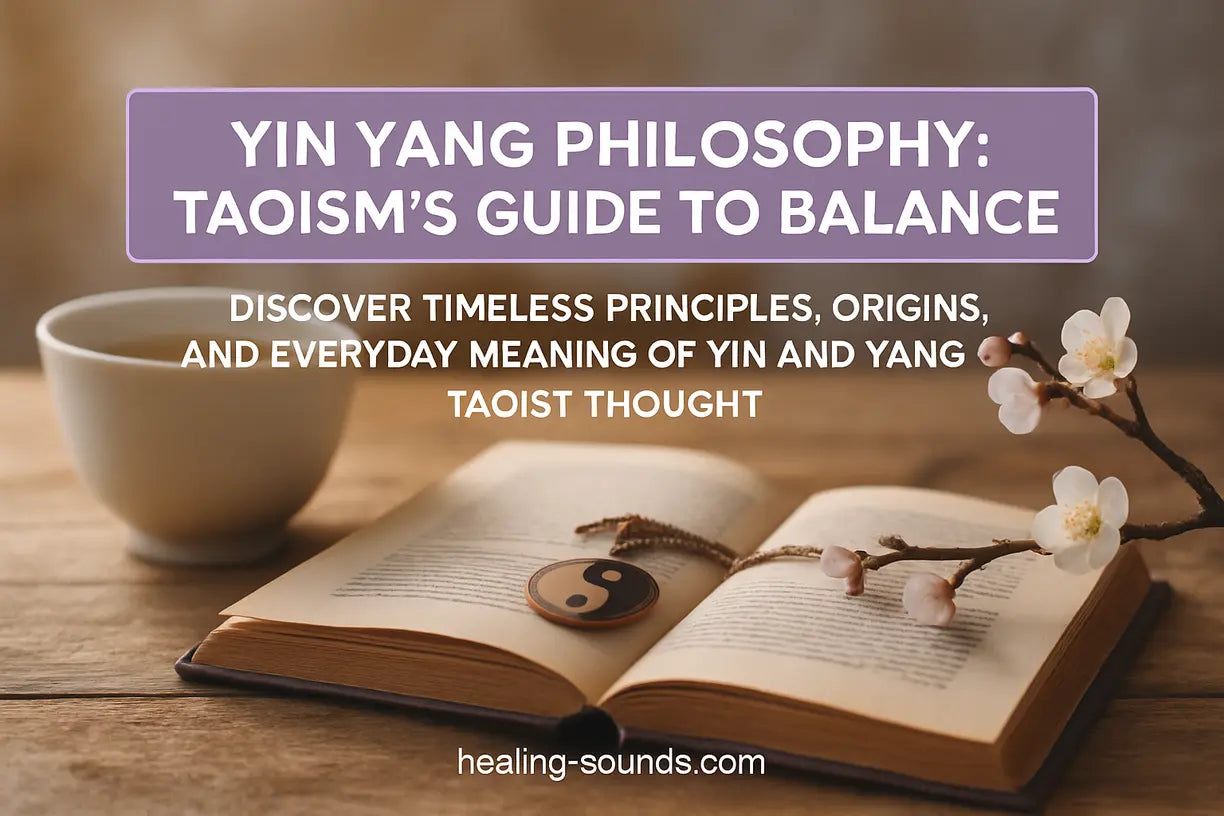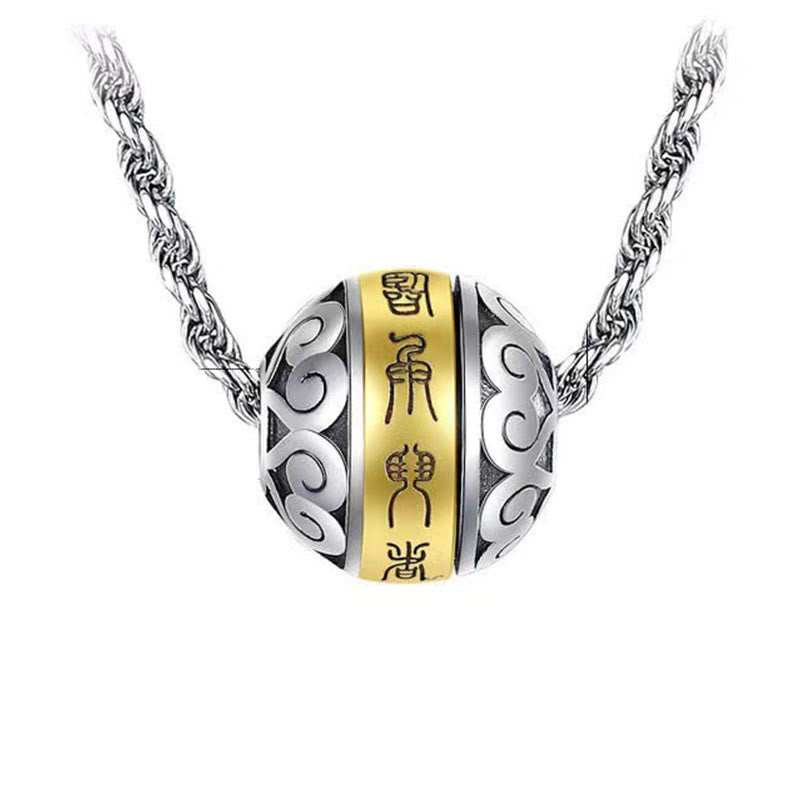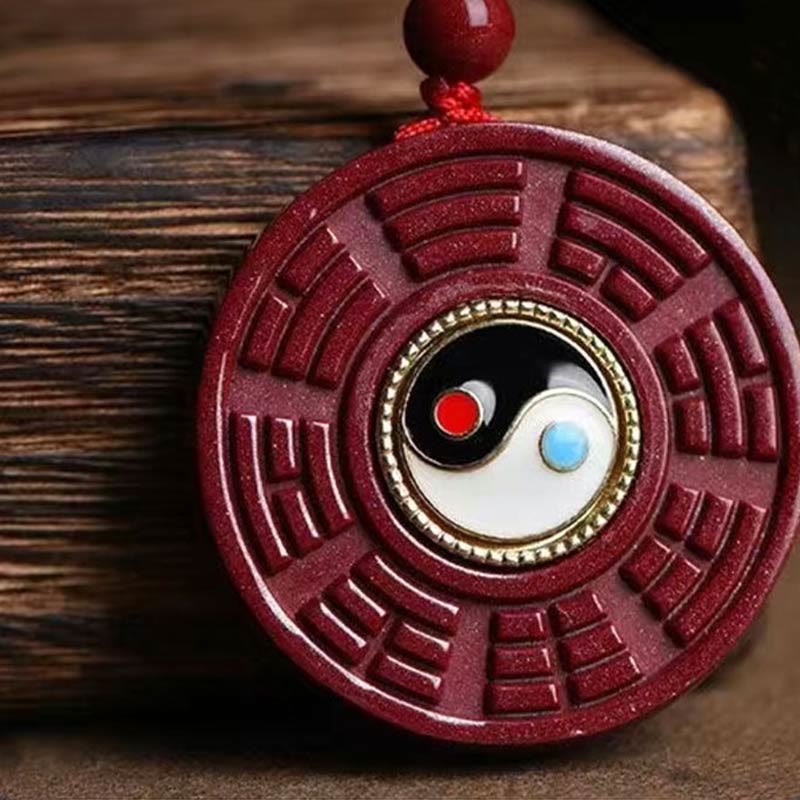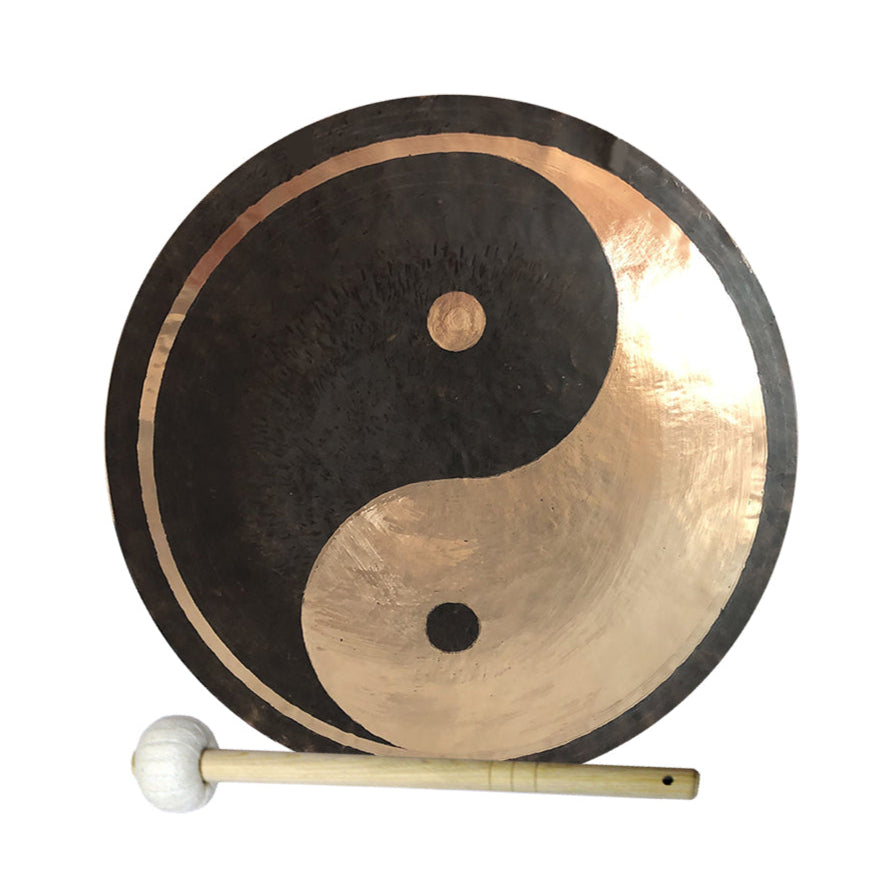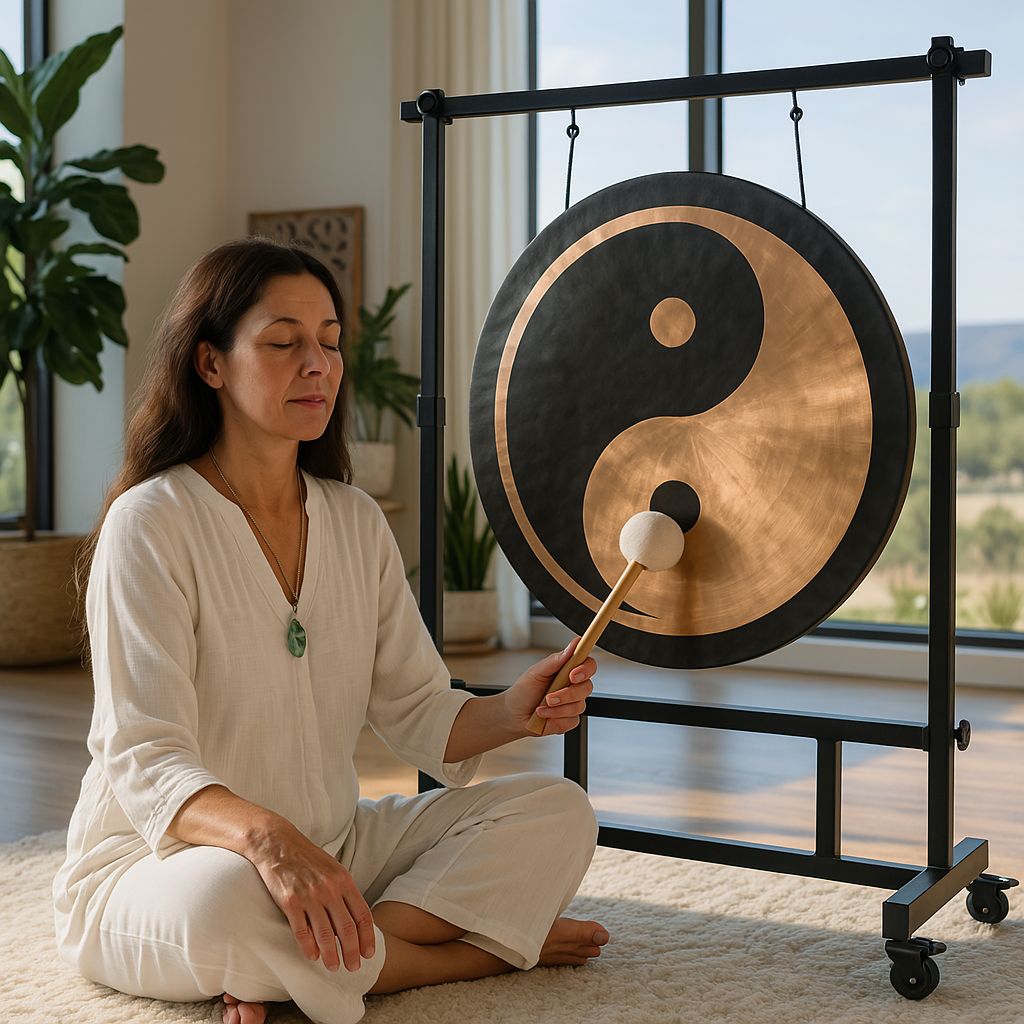La quête de l'équilibre est un cheminement humain universel. Dans un monde en perpétuel mouvement, en ébullition et aux exigences contradictoires, nous cherchons souvent un point d'ancrage, un moyen de comprendre le chaos et d'y trouver l'harmonie. Depuis des siècles, les chercheurs de sagesse se tournent vers la profonde simplicité de la philosophie du yin et du yang . Bien plus qu'un simple symbole noir et blanc emblématique, c'est un cadre profond et pratique pour comprendre la nature de la réalité, ancré dans les traditions ancestrales du taoïsme.
Si vous vous êtes déjà senti tiraillé entre des directions opposées ou vous êtes demandé comment concilier des aspects conflictuels de votre vie, cette philosophie offre des réponses puissantes. Elle nous enseigne que des forces apparemment opposées – comme la lumière et l'obscurité, le repos et l'action, le féminin et le masculin – ne sont pas des ennemis dans un combat, mais des partenaires dans une danse cosmique. Ce guide explorera les origines de la philosophie du yin et du yang, décodera ses principes fondamentaux au sein du taoïsme et vous révélera comment appliquer cette sagesse intemporelle pour cultiver plus d'équilibre, de paix et de compréhension dans votre vie.
Les racines anciennes : d’où vient la philosophie Yin Yang ?
Le concept du yin et du yang est l'un des plus anciens et des plus importants de la pensée chinoise, ses origines remontant au moins au IIIe siècle avant J.-C. Bien qu'il soit surtout associé au taoïsme, ses racines sont encore plus profondes, apparaissant pour la première fois dans le texte ancien connu sous le nom de Yi King (ou Livre des Mutations). Les premiers penseurs et astronomes chinois observaient le monde qui les entourait : les cycles du soleil et de la lune, le changement des saisons et les schémas de la vie et de la mort. À partir de ces observations, ils ont développé une vision du monde fondée sur l'équilibre cosmique et les changements cycliques .
Ce n'était pas une simple idée abstraite ; c'était une façon d'expliquer tout, du fonctionnement de l'univers à la santé du corps humain. Le taoïsme, tradition philosophique et spirituelle attribuée au sage Lao Tseu, embrassait et intégrait pleinement la philosophie du yin et du yang. Pour les taoïstes, comprendre l'interaction de ces forces était essentiel à la compréhension du Tao , la « Voie » fondamentale et ineffable, ou ordre naturel de l'univers. C'est un rappel que la sagesse ne réside pas dans la division, mais dans l'observation de l'unité harmonieuse de toutes choses.

Décoder le symbole : les principes fondamentaux du Yin et du Yang
Pour véritablement saisir la philosophie du yin et du yang, il faut aller au-delà du symbole et comprendre les principes dynamiques qu'il représente. Ces principes ne sont pas des règles statiques, mais des concepts fluides qui décrivent le flux constant d'énergie dans l'univers.
Dualité et opposition (le Yin n'est pas le Yang)
Le premier principe est celui de la dualité. Le yin et le yang sont des qualités opposées, chacune possédant des caractéristiques distinctes. Ils représentent la polarité fondamentale de l'existence. Cependant, cette opposition n'est pas conflictuelle, mais contrastée. L'un ne peut être pleinement compris sans l'autre.
- Qualités Yin : Féminin, obscurité, nuit, passivité, froid, énergie intérieure, terre et repos.
- Qualités Yang : Masculin, lumière, jour, activité, chaleur, énergie extérieure, ciel et action.
Reconnaître cette dualité nous permet de voir la valeur de tous les aspects de la vie, des périodes de contemplation silencieuse (Yin) aux moments de création énergétique (Yang).
Interdépendance et harmonie (le Yin et le Yang ne peuvent exister l'un sans l'autre)
Il s'agit d'un élément crucial de la philosophie du yin et du yang . Le yin et le yang sont fondamentalement interdépendants ; l'un ne peut exister sans l'autre. La lumière n'a de sens sans l'obscurité ; la hauteur est impossible sans la profondeur. Le symbole emblématique lui-même l'illustre magnifiquement : dans le tourbillon noir du yin se trouve un point blanc (yang), et dans le tourbillon blanc du yang se trouve un point noir (yin). Cela signifie que chaque force contient la graine de l'autre, créant une relation de confiance et d'harmonie mutuelles, et non de conflit.
Transformation dynamique (le Yin devient le Yang, le Yang devient le Yin)
Le principe le plus puissant est peut-être celui de la transformation dynamique. Le yin et le yang sont en constante évolution, l'un se transformant en l'autre. Le jour (yang) cède progressivement la place à la nuit (yin). La chaleur maximale de l'été (yang) laisse finalement place au froid de l'hiver (yin). Ce flux cyclique est le moteur de l'univers. Ce principe nous enseigne que rien n'est permanent et que le changement est naturel et nécessaire à la vie. Lorsque nous sommes à notre apogée (yang maximal), nous devons nous rappeler que le besoin de repos (yin) s'accroît.

Collier d'équilibre taoïste en cuivre avec mantra à neuf caractères
$24.90 $35.90
Portez l'ancienne sagesse taoïste et l'équilibre quotidien du yin et du yang avec ce collier mantra en cuivre pour l'harmonie spirituelle.
Explorer le produitLe Yin et le Yang dans le Taoïsme : le chemin vers la « Voie » (Tao)
Dans la philosophie taoïste , le but ultime est de vivre en accord avec le Tao, le rythme naturel et fluide de l'univers. Les principes du yin et du yang nous guident sur ce chemin. En observant l'interaction du yin et du yang dans la nature et en nous-mêmes, nous pouvons apprendre à agir avec plus de sagesse et d'aisance. C'est l'essence même du concept taoïste de Wu Wei , souvent traduit par « action sans effort » ou « non-action ».
Wu Wei ne signifie pas être paresseux ou passif. Il s'agit d'agir en accord avec le cours naturel des choses, sans lutte ni contrainte inutile. C'est nager avec le courant, et non à contre-courant. Par exemple, au lieu de se lancer dans un projet créatif lorsqu'on se sent fatigué et sans inspiration (aller à l'encontre de son énergie yin), Wu Wei suggère de se reposer et de laisser l'inspiration surgir naturellement plus tard (suivre le cycle du yang). Comprendre le yin et le yang nous permet de reconnaître quand il est temps d'agir et quand il est temps de céder, menant ainsi à une vie plus harmonieuse et plus efficace.
Vivre la philosophie Yin Yang : applications pratiques pour la vie moderne
Bien que ses origines soient anciennes, la signification du yin et du yang est profondément pertinente aujourd'hui. Intégrer cette philosophie ne signifie pas abandonner la vie moderne, mais y apporter une plus grande conscience et un meilleur équilibre.
Équilibrer votre énergie et votre santé
La médecine traditionnelle chinoise (MTC) repose entièrement sur la philosophie du yin et du yang. La santé est perçue comme un équilibre dynamique entre les énergies yin et yang du corps. La maladie survient lorsqu'une force devient excessive ou insuffisante. Nous pouvons appliquer cette philosophie en :
- Équilibrer son alimentation : manger des aliments « rafraîchissants » (yin) comme des salades et des fruits lorsque l'on a trop chaud, et des aliments « réchauffants » (yang) comme du gingembre et des soupes lorsque l'on a froid.
- Activité d’équilibrage : veiller à ce que l’exercice intense (yang) soit équilibré avec un repos, des étirements et un sommeil adéquats (yin).
Améliorer les relations et la communication
Comprendre le yin et le yang peut transformer nos relations. Nous pouvons reconnaître qu'un partenaire plus extraverti et actif (yang) et un partenaire plus introverti et discret (yin) ne sont pas incompatibles, mais peuvent créer une relation équilibrée et épanouissante. Cela nous encourage à apprécier les différences plutôt qu'à chercher à uniformiser tout le monde. Cela nous aide à écouter (yin) autant qu'à parler (yang) et à trouver l'harmonie dans nos interactions.

Améliorer la pratique spirituelle
Pour ceux qui suivent un chemin spirituel, le yin et le yang offrent une perspective puissante. La méditation peut être considérée comme une pratique yin de calme et de réceptivité, qui équilibre l'activité yang du quotidien. Elle nous encourage à observer le flux des pensées et des émotions sans jugement, les reconnaissant comme faisant partie intégrante du paysage naturel et en constante évolution de notre monde intérieur. Les instruments utilisés dans les bains sonores, par exemple, créent des vibrations qui peuvent contribuer à harmoniser l'énergie du corps, offrant une expérience tangible de cet équilibre philosophique.
Outils pour cultiver l'harmonie taoïste
$34.90
$49.90
Connectez-vous à des siècles de philosophie yin yang et d'énergie taoïste avec ce pendentif cinabre pour la protection et l'équilibre. En savoir plus ➔
$249.90
Découvrez l'harmonie yin yang et l'équilibre méditatif avec ce gong taoïste magnifiquement conçu pour la guérison sonore. En savoir plus ➔
Adoptez la danse de l'équilibre
La philosophie du yin et du yang n'est pas seulement une curiosité intellectuelle ; c'est un guide vivant et dynamique vers une existence plus équilibrée et harmonieuse. Elle nous apprend à honorer chaque aspect de nous-mêmes et de notre vie : les moments de calme et d'énergie, les périodes de joie et les moments de tristesse. En comprenant ses origines taoïstes ancestrales et ses principes fondamentaux de dualité, d'interdépendance et de transformation, nous pouvons cesser de lutter contre les courants de la vie et apprendre à les suivre.
Adopter cette sagesse vous permet de trouver la force dans la douceur, l'action dans le calme et l'unité dans la diversité. Que ce soit par une vie consciente, des relations conscientes ou une pratique spirituelle, la voie du yin et du yang est un chemin vers la plénitude. Pensez à adopter un symbole, comme un bijou, pour garder ces principes puissants à l'esprit tout au long de votre chemin vers l'équilibre.
Questions fréquemment posées sur la philosophie Yin Yang
La philosophie du yin-yang est un concept dualiste décrivant comment des forces apparemment opposées ou contraires peuvent en réalité être complémentaires, interconnectées et interdépendantes dans le monde naturel. Elle postule que tout existe dans un état d'équilibre dynamique, chaque force contenant le germe de l'autre et se transformant constamment de l'une à l'autre.
Le taoïsme est la principale philosophie qui intègre et défend pleinement le concept du yin et du yang. Bien que cette idée soit antérieure au taoïsme et qu'elle soit présente dans la cosmologie chinoise générale et dans des textes comme le Yi King , elle constitue un principe central de la pensée taoïste pour comprendre le « Tao », ou la nature de l'univers.
D'un point de vue psychologique, le yin-yang représente l'intégration des aspects opposés de la personnalité et des expériences de vie. Il encourage l'acceptation de soi en reconnaissant la valeur de qualités comme l'affirmation de soi (yang) et la réceptivité (yin). Il suggère que le bien-être mental résulte de l'équilibre de ces énergies internes plutôt que de la suppression de l'une au profit de l'autre, ce qui conduit à un soi plus complet et résilient.
Le yin-yang symbolise le principe universel d' équilibre, d'harmonie et d'interdépendance entre forces opposées. Il représente l'idée que l'univers est un tout unifié où la dualité (lumière/obscurité, masculin/féminin, bien/mal) est nécessaire à l'existence, et que ces forces évoluent dans un cycle constant et dynamique de transformation et d'interdépendance.
Les applications pratiques sont très répandues et comprennent : la médecine traditionnelle chinoise (MTC) pour diagnostiquer et traiter les maladies en équilibrant les énergies corporelles ; le Feng Shui pour aménager les espaces de vie ; les arts martiaux pour mélanger les techniques dures (yang) et douces (yin) ; et le développement personnel pour équilibrer le travail (yang) avec le repos (yin) et la communication assertive avec l'écoute active.

